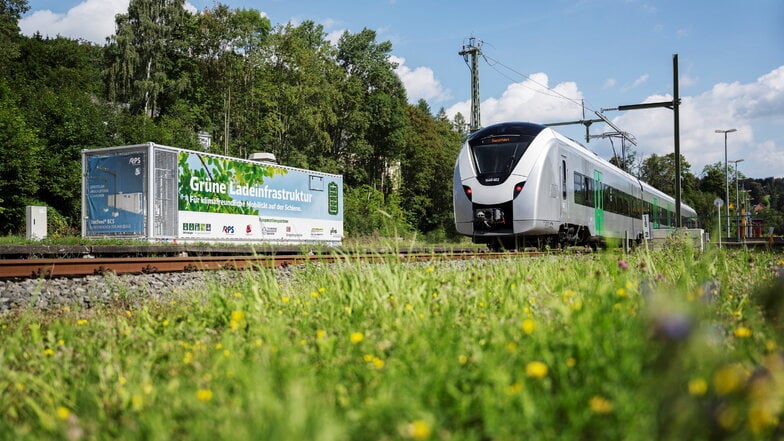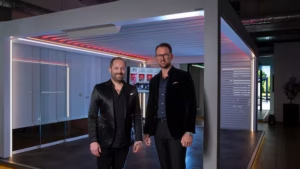Annaberg-Buchholz. Mit einer neuartigen Ladestation wollen Experten vom Bahnforschungscampus SRCC dem Umstieg von Diesel- auf Akkuzüge auf die Sprünge helfen. Die „Wallbox“ für Züge werde in Annaberg-Buchholz ein Jahr lang getestet und soll dann 2024 Zügen im Regelbetrieb zur Verfügung stehen, sagte SRCC-Geschäftsführer Sören Claus der Deutschen Presse-Agentur. Dann werden dem Plan zufolge einzelne Akkuzüge der Strecke Leipzig-Chemnitz nach Annaberg weiterfahren und dort geladen.
Etwas mehr als 60 Prozent des deutschen Schienennetzes ist elektrifiziert. Auf den übrigen Strecken ohne Oberleitung rollen bisher Dieselfahrzeuge. Für den Klimaschutz sollen sie künftig durch Züge mit Akku oder Wasserstoffantrieb ersetzt werden. Akkuzüge können in der Regel per Stromabnehmer an vorhandenen Oberleitungen geladen werden, etwa während eines Halts am Bahnhof. Doch das sei nicht überall möglich, betonte Claus. Er schätzt, dass bundesweit eine hohe zweistellige Zahl separater Ladestationen benötigt wird.
Die Aufgabe der Forscher ist es, eine Schnittstelle zwischen dem Stromnetz der Bahn und dem übrigen Stromnetz zu schaffen, ohne beim Laden der Züge dieses Netz zu überlasten. Das Stromnetz der Bahn wird mit einer Frequenz von 16,7 statt 50 Hertz betrieben. Mit einem Symmetrie-Umrichter werde in der neuen Station dafür gesorgt, dass das abgebende Stromnetz gleichmäßig über drei Phasen genutzt werde, erklärte Claus. Es handle sich um die europaweit erste Ladestation dieser Art. Den Angaben zufolge sind mehrere Millionen Euro in die Entwicklung geflossen.
Die Anlage sollte am Donnerstag bei der Konferenz „Digital Rail Convention“ dem Fachpublikum vorgestellt werden und offiziell in Betrieb gehen. Am Freitag können sich dann auch Schulgruppen und interessierte Bürger über die Arbeit auf dem Forschungscampus informieren. Dazu sind etwa Vorträge zur Mobilität der Zukunft geplant, werden Fahrten mit dem TGV simuliert und stellen Unternehmen aktuelle Schienenfahrzeuge vor. Laut Claus haben sich dafür bereits Klassen mit mehr als 200 Schülern angemeldet. (dpa)








